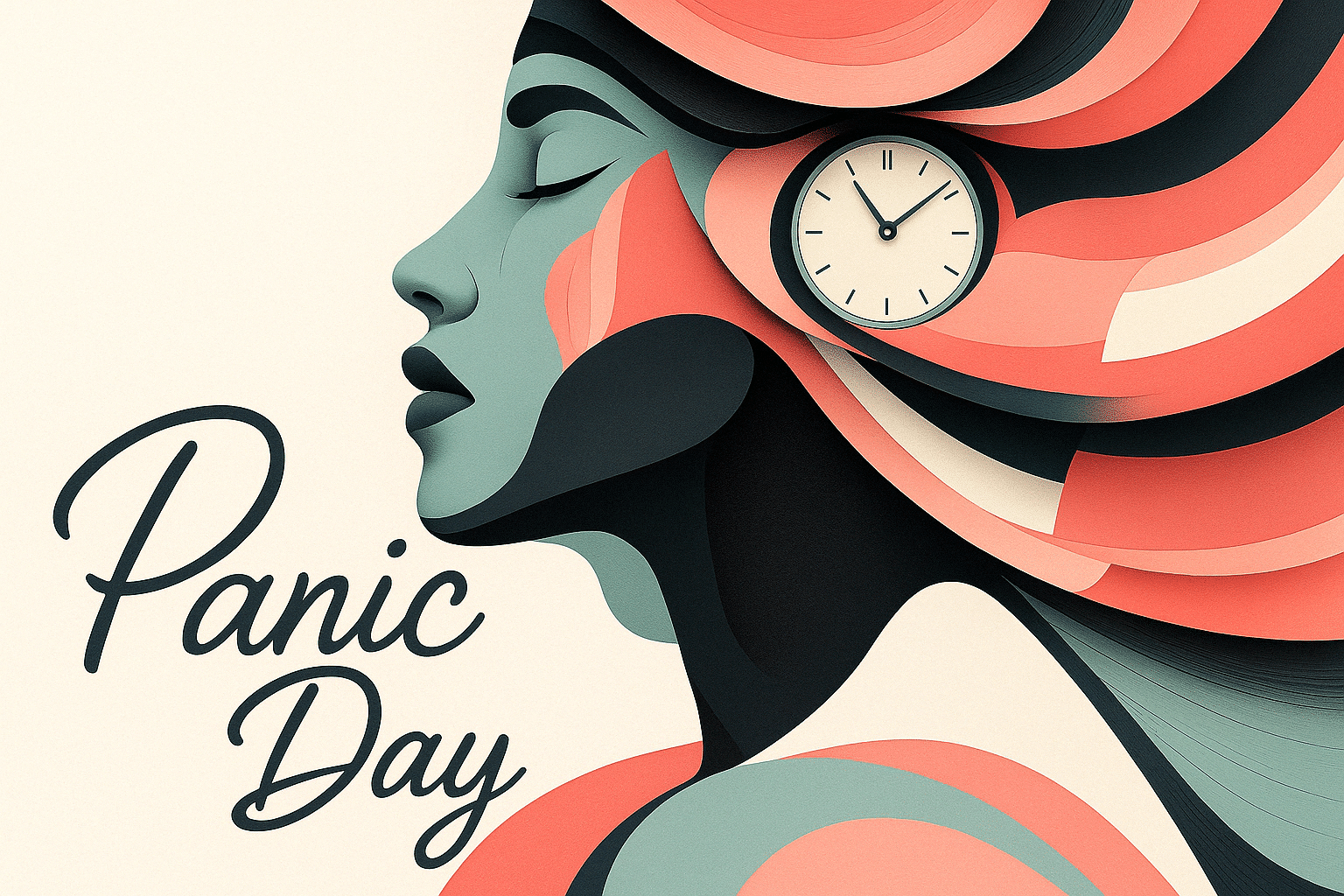What is International Panic Day?
International Panic Day is held every year on June 18 and is observed worldwide. The day acknowledges feelings of panic and stress that many people experience but rarely express. It invites people to reflect on their mental state and release tension, either through humour or honest conversation.
International Panic Day encourages emotional awareness. It can be a moment to scream into a pillow, laugh at chaos, or take a long walk. The point is not to increase panic, but to accept it, name it, and let it move through.
In the Netherlands, International Panic Day is marked by mental health organisations and social media communities. The day is often used to start conversations, share calming techniques, or simply admit that sometimes everything feels like too much.
History and Origin
International Panic Day likely began as a humorous calendar entry but grew into something more reflective. It does not come from an official institution, but the idea resonated widely. People recognised themselves in the experience of emotional overload and began to use the date as a moment to pause, vent, or breathe.
Since then, the day has been embraced by mental health advocates and creators. Its message is simple: panic happens. You’re not alone. It deserves recognition, not silence. That message continues to grow across platforms and cultures.
Who participates in International Panic Day?
- Mental health workers: Share tips, resources, or host workshops to support emotional wellbeing.
- Artists and writers: Post poetry, comics, or videos about anxiety and daily pressure.
- Online communities: Use the day to vent, laugh, or share tools for calming the mind.
- Students and employees: Acknowledge shared stress in schools or offices with breaks or themed moments.
- Friends and family: Use the day as a chance to check in with each other and talk honestly.
Slogans and Themes
International Panic Day often features themes like emotional honesty, stress relief, and permission to break down. Slogans include “Permission to Lose It,” “You’re Allowed to Panic,” and “Feel It, Then Breathe.” The goal is not to fix panic immediately, but to name it without shame.
Colors, Symbols and Patterns
Colors
- Red: Symbolises intensity, pressure, and the heat of panic.
- Grey: Reflects brain fog, fatigue, and the feeling of emotional clutter.
- Blue: Represents calm, rest, and the emotional state many people hope to reach.
Symbols
- Alarm clock: Suggests time pressure or the suddenness of panic.
- Exclamation mark: Used to show alertness or mental overload.
- Scribble cloud: Represents chaos, messy thoughts, or disorganisation.
Patterns
- Spirals: Symbolise thoughts that loop and intensify.
- Jagged lines: Reflect emotional spikes and erratic mental energy.
- Abstract clouds: Suggest heaviness or confusion.
Most used hashtags
- #InternationalPanicDay
- #MentalOverload
- #PanicIsReal
- #LetItOut
- #EmotionalAwareness
How do you celebrate International Panic Day?
- Take a break: Step outside, sit in silence, or rest your body and mind.
- Laugh it out: Share memes or exaggerated reactions to ease tension.
- Journal your feelings: Write without editing to unload stress.
- Talk with someone: Call a friend, join a forum, or speak with a therapist.
- Try calming tools: Use breathing exercises, music, or creative hobbies to release inner pressure.
Why is International Panic Day important?
International Panic Day is important because it puts emotional chaos on the calendar. It says panic does not have to be hidden. It can be understood, expressed, and released. By naming the feeling, the day opens a door to compassion and community.
It also offers a shared pause. Many people walk around with high stress, without space to release it. This day makes space for that. Whether through jokes, cries, or deep breaths, International Panic Day reminds people they are not alone.
Features
June 18: Panic Day
Why do you keep falling for the same type?
Read the article Lovemaps: the hidden blueprint of our love.

